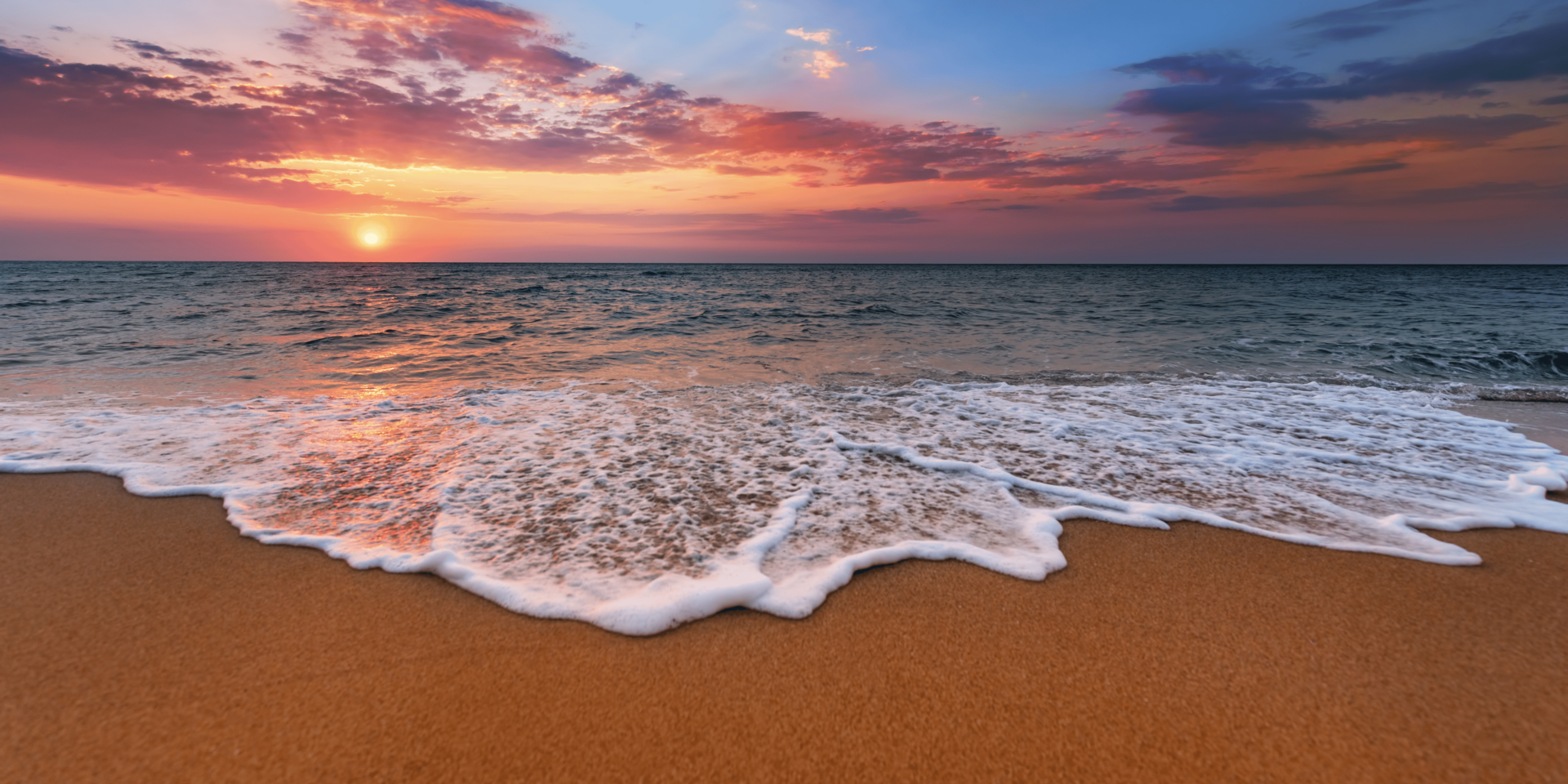This hidden shoreline pulls artists back because the landscape offers a space free of distraction. Wide beaches stretch into the distance, giving your mind room to open. The coastline remains mostly undeveloped, with native vegetation and undisturbed dunes framing the view.
When you arrive, the silence is noticeable. You hear only the wind, the waves, and occasional birds. These sounds do not interrupt thought—they support it. The lack of artificial noise makes it easier to notice your own ideas. You’re not just seeing a beach; you’re absorbing a setting that clears mental space.
The steady rhythm of the water creates structure without pressure. For artists, that structure becomes a frame within which focus returns.
The Light Changes Constantly, Offering New Perspectives
One reason dreamers revisit this place is the shifting light. Throughout the day, the shoreline looks different. Morning brings soft blue tones and long shadows. Midday light sharpens every edge, and evening adds gold to every surface.
This constant change affects the way the space feels. It invites observers to pause and study the details. Whether you write, draw, compose, or reflect, the changing light keeps you present. You don’t need prompts or planning—the environment offers new input every hour.
The shoreline’s geography also plays a role. It curves and rises in a way that alters how the sun hits the water. These changes make every return visit slightly different, feeding the creative process in subtle ways.
Isolation Without Emptiness Supports Deep Thought
Artists and thinkers value this place because it’s quiet without being empty. You won’t find crowds or noise, but the area never feels lifeless. A few walkers pass. Birds move in patterns across the sky. The water continues its cycle. There is just enough activity to remind you that you are not alone.
This balance supports people who need space to think but also need gentle reminders of the world outside their minds. Unlike busy tourist beaches, this shoreline stays free from large events and noisy attractions. There are no vendors or street music. The land remains the focus.
That simplicity allows extended time in thought without interruption. Artists often return because the setting doesn’t require them to defend their need for quiet—it welcomes it.
The Environment Encourages Routine Without Restriction
The shoreline’s steady pace helps creative visitors build structure into their days. The sun rises and sets with precision. The tide comes and goes. These natural markers help shape a rhythm for work and rest.
You might walk in the morning, pause at midday, and return to work in the afternoon. The pattern repeats itself without force. You don’t need to schedule every hour; you simply follow the movement of the environment.
This kind of rhythm allows creative work to unfold naturally. You stay connected to time without being pushed by it. When artists find this flow, they often return, knowing that the shoreline supports—not controls—their pace.
Subtle Details Inspire New Creative Direction
What draws people back isn’t always obvious at first glance. Sometimes it’s the way the wind shifts sand patterns overnight. Other times it’s the contrast between still water and rushing waves. These quiet shifts invite close observation.
Creative minds tend to notice what others miss. They see shapes in cloud shadows and find rhythm in the motion of grass. The shoreline provides endless detail, but never all at once. You have to look slowly. You have to return often.
This process trains the eye and ear. It builds patience. Artists come back not to repeat a past visit, but to look again and see something new.
The Area Remains Unbranded and Unclaimed
One reason this shoreline stays special is because it hasn’t been turned into a product. There are no giant signs, no themed attractions, and no commercial noise. Local caretakers keep development light, and buildings blend into the environment.
This absence of branding matters. It means artists don’t walk into a space already filled with someone else’s voice. The land speaks quietly, without selling anything. That silence allows visitors to hear their own thoughts more clearly.
Without advertisements or distractions, the environment becomes neutral ground for personal ideas to form. This neutrality draws in people who want space to create something original.
Return Visits Deepen the Connection to Place
Every time an artist returns, they bring a new version of themselves. The shoreline stays the same in structure, but never in detail. The weather changes. The seasons shift. The visitor’s mindset evolves. This creates a dynamic relationship between person and place.
What begins as a one-time visit becomes a habit. Creative people often choose this shoreline not just for a single project but as part of an ongoing process. They come to reset, to observe, or to finish something they couldn’t complete elsewhere.
This long-term connection adds meaning to their work. They know how the place sounds at dawn. They remember how the sky looked before a storm. These memories become part of their creative tools, and they return to keep the connection alive.
The Shoreline Offers Closure and New Beginnings
Many artists visit this place when they’re in transition. The shoreline gives them a way to pause, to finish a chapter, or to begin something new. The water never stops moving, and neither do the tides of life. But the beach stays still enough to hold that motion without judgment.
As people leave, they often do so with more clarity than they had when they arrived. The space doesn’t force change—it allows it. That quiet permission is rare and valuable.
For those who create, think, or dream, that quiet becomes a reason to return. Not for escape, but for return to self.
